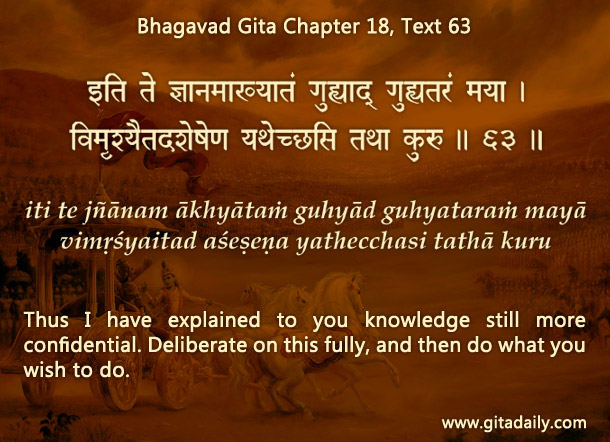We can’t deprive others of their right to be wrong but we can empower them to use that right rightly
If we see someone ignorantly walking towards the edge of a dangerous cliff, we will naturally warn them, “Don’t go there.” Usually, they will heed our caution –and heed it gratefully.
In life’s journey, however, such cautions aren’t so well received. Why not? Because dangerous paths don’t appear dangerous. The path of sensual indulgence that ends in misery appears nectar-filled initially (Bhagavad-gita 18.38). If we study the Gita, we can understand this truth.
But most people, being unaware of Gita wisdom, can’t appreciate this truth. They often reject our warnings about wanton sensual pleasures as outmoded moral taboos.
Such rebuffs can remind us that everyone has God-given free will. With that free will, they have the right to choose wrongly. If we try to forcibly deprive them of that right, we may be doing right, but doing it in a wrong way – a way that rarely results in others’ changing their way.
To be more effective, we can follow Krishna’s example in the Bhagavad-gita. When Arjuna is about to make a wrong choice by abandoning his duty, Krishna equips Arjuna with philosophical vision by speaking the Gita, thereby helping him see better the correlation between choices and consequences. In the Gita’s conclusion, Krishna acknowledges Arjuna’s free will when urging him to deliberate before choosing (18.63). Being equipped with the Gita’s vision, Arjuna naturally uses his free will wisely (18.73).
When cautioning others about their life-choices, we need to first understand that they often see things differently. Therefore, rather than issuing what may seem to them sectarian moral diktats, we can offer them universal philosophical vision by sharing Gita wisdom. By thus equipping them to see choice-consequence correlations, we can empower them to use their right to choose to choose rightly.
Think it over:
- Why don’t people receive cautions gratefully?
- When Arjuna is about to make a wrong choice, how does Krishna guide him?
- How can we caution others effectively?
To know more about this verse, please click on the image
Explanation of article:
https://youtu.be/Q7v_QAIYobc
Podcast:




Leave A Comment